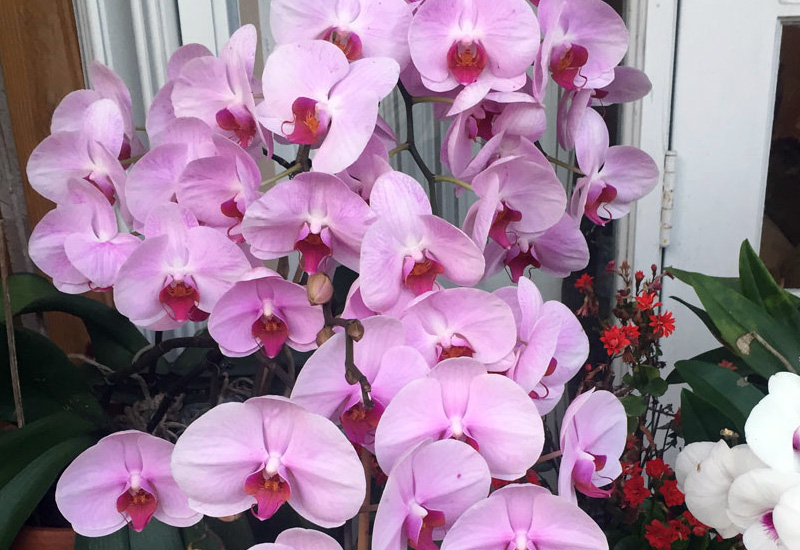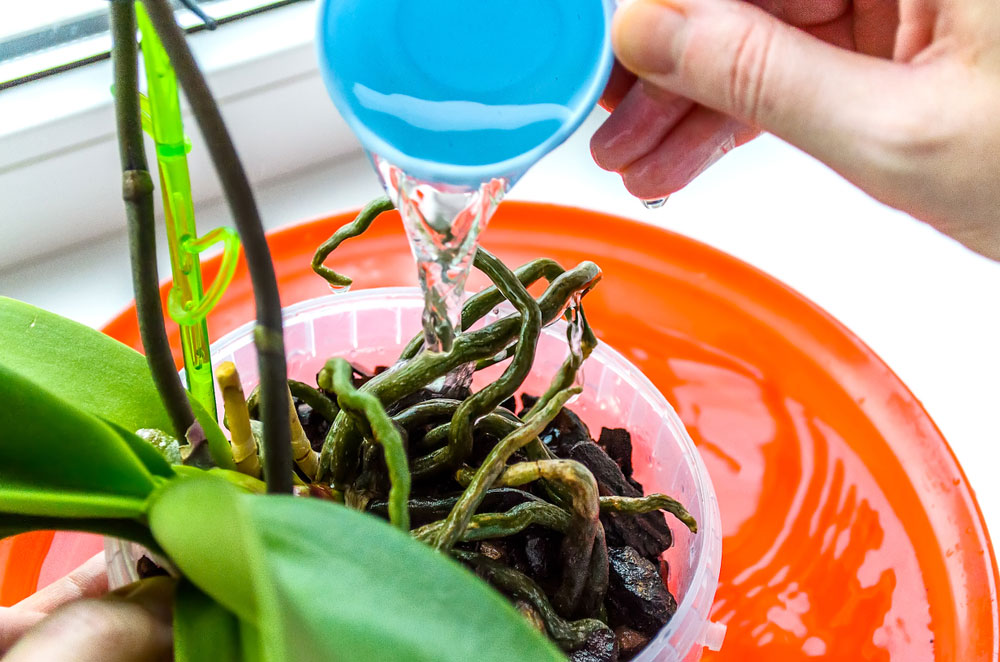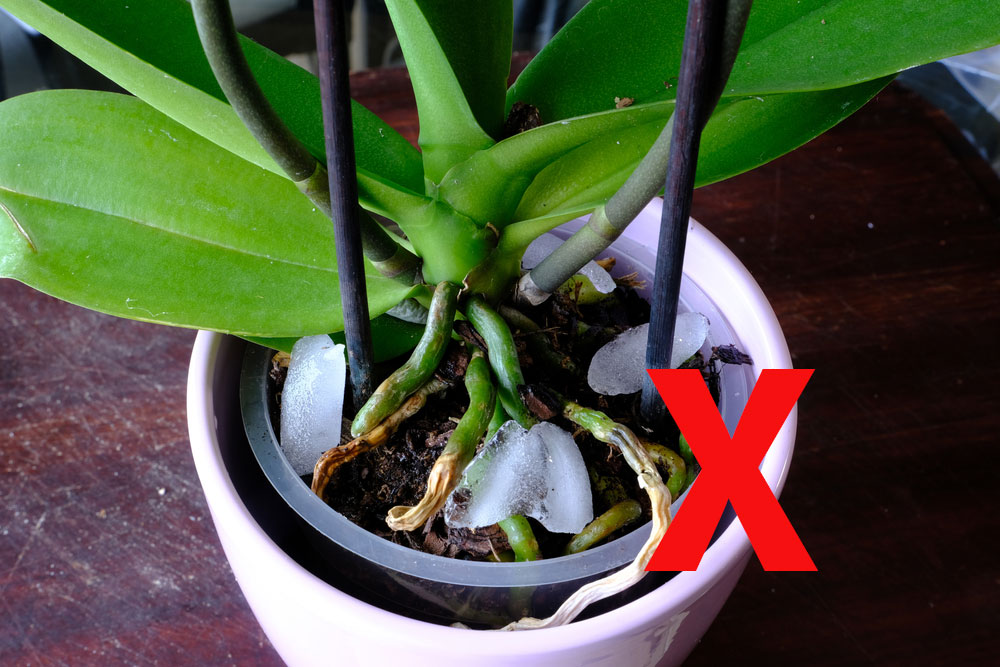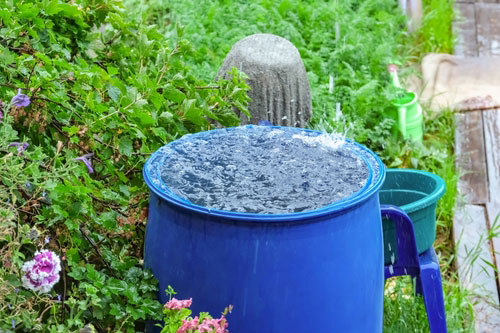Growing beautiful orchids can be tricky, especially when it comes to watering. If you’re new to orchid care, you might not realize that watering mistakes are the number one reason these exotic plants struggle. Many orchid lovers make the same errors without even knowing it.
The biggest watering mistake you need to avoid with orchids is overwatering, which can quickly lead to root rot and eventually kill your entire plant. Unlike many houseplants, orchids don’t like to have constantly wet roots. They need a special watering approach that mimics their natural growing conditions.
Another common error is using ice cubes to water orchids, which is is actually harmful to these tropical plants.
Understanding Orchid Watering Essentials
Watering orchids correctly requires attention to their specific needs and environment. The right watering approach will keep your plants healthy and encourage beautiful blooms.
The Unique Water Requirements of Orchids
Unlike typical houseplants, orchids don’t grow in regular soil. Most orchids are epiphytes that grow attached to trees in nature, with roots exposed to air. This means they need special watering care.
Orchids prefer a “drench and dry” watering method. You should thoroughly water your orchid and then allow it to dry out before watering again. This mimics their natural rainfall pattern in tropical environments.
Different orchid types have varying water needs. Orchids with pseudobulbs (like Cattleyas) can store water and tolerate drier conditions. Orchids without pseudobulbs (like Phalaenopsis) need more frequent watering.
The potting medium matters too. Bark mixes drain quickly, while moss retains moisture longer. Check your specific orchid type to match its watering needs to the right medium.
Read more: Tips on How to Get Your Orchids to Rebloom
Signs of Proper Hydration

Healthy orchid roots are your best indicator of proper watering. Green or silvery-green roots mean your orchid is well-hydrated. When these roots need water, they’ll appear silvery-white.
You can tell if your orchid needs water by:
- Checking if the pot feels light when lifted
- Looking for slightly wrinkled leaves
- Noticing roots that have turned silvery instead of green
- Testing the potting mix with your finger (it should feel dry)
Be careful not to let orchids stand in undrained water as this quickly leads to root rot. Also, avoid misting orchid flowers since water pooling on delicate tissues can cause them to rot.
Morning watering is best as it gives excess moisture time to evaporate before cooler evening temperatures.
Common Orchid Watering Mistakes
Proper watering is the foundation of healthy orchid care, yet it’s where many plant lovers struggle most. Water issues can quickly lead to root problems that affect your entire plant’s health and blooming potential.
Overwatering Risks
Overwatering is perhaps the most common orchid care mistake beginners make. When you water too frequently, the roots don’t have time to dry properly between waterings.
This creates a constantly damp environment that leads to root rot, where roots turn mushy and brown instead of firm and green. Once rot starts, it can quickly spread through the entire root system.
Signs your orchid is overwatered include:
- Yellowing leaves (especially lower leaves)
- Soft, mushy roots
- Black or brown spots on leaves
- Foul smell from the potting media
To avoid overwatering, always check if your orchid actually needs water before adding more. The potting mix should be nearly dry and roots should appear silvery-green before watering again.

Underwatering Issues
While overwatering gets more attention, underwatering can be just as harmful to your orchid’s health. Dehydrated orchids can’t absorb nutrients properly, which affects their overall growth.
You can spot an underwatered orchid by its gray, shriveled roots instead of the plump green ones seen in healthy plants. The leaves may also appear wrinkled, leathery, or unusually floppy.
Flower buds might drop before opening, and existing blooms might wilt prematurely when the plant is too dry. Even the pseudobulbs (the thick stem-like structures) can shrivel and wrinkle.
To properly rehydrate a dry orchid, give it a thorough soaking by placing the entire pot in a bowl of room temperature water for 10-15 minutes. This allows roots to slowly absorb the moisture they need.
Using the Wrong Water Quality
Water quality matters tremendously for orchid health. Using softened water can harm your orchids because it typically contains salt, which builds up in the potting medium and damages roots.
Read more: Expert Tips for Orchid Blooms
Tap water with high mineral content (hard water) can also cause problems over time, leaving mineral deposits on leaves and in the growing medium.
Water temperature is equally important. Cold water can shock the roots and prevent proper absorption. Always use room temperature water for your orchids.
Best water options for orchids:
- Rainwater: Naturally soft and free of chemicals
- Filtered water: Removes most harmful chemicals
- Distilled water: Pure but lacks beneficial minerals
- Tap water left out overnight: Allows chlorine to evaporate
Ice Cube Myth
The popular advice to water orchids with ice cubes is actually harmful to these tropical plants. Freezing temperatures shock the roots and can cause lasting damage to your plant.

Ice cubes also don’t provide even moisture distribution. They melt slowly in one spot, leaving other areas of the potting medium completely dry. This creates an imbalanced watering pattern that doesn’t reach all roots.
Orchids are tropical plants that naturally receive rain in warm temperatures. Using ice contradicts their native growing conditions and natural preferences.
Instead of ice, water thoroughly with room temperature water, allowing it to flow through the pot completely. This mimics the natural rainfall patterns orchids experience in their native habitats and ensures all roots receive moisture.
Correct Watering Techniques for Orchids
Watering your orchids correctly is the key to keeping these beautiful plants healthy and blooming regularly. Following these simple watering techniques will help you avoid common mistakes that can damage or kill your orchids.
When to Water Your Orchid
Knowing the right time to water is crucial for orchid health. The best approach is to water orchids just as they dry out. This applies to all types of orchids, though there are slight variations depending on your specific plant.
For orchids with pseudobulbs (water storage organs), wait until the potting mix is nearly dry before watering again. These plants can tolerate drying out more than others.
Look at the roots to determine when to water. Healthy, hydrated roots appear green, while dry roots look silvery-gray. When you see mostly silvery roots, it’s time to water.
The weight of the pot is another great indicator. Pick up your orchid pot – if it feels light, it’s probably time to water. With practice, you’ll recognize the difference between a dry and recently watered plant.
How to Water Your Orchid Effectively
Always water orchids from above with fresh, pure water. Room temperature water is best – avoid using ice cubes despite some popular advice.
Water quality matters! Use:
- Rainwater
- Distilled water
- Reverse osmosis water
Avoid softened water as it contains salts that can harm your plants.
Water thoroughly until it runs freely from the drainage holes. This ensures complete hydration and flushes out salt buildup. Let all excess water drain completely – never let orchids stand in undrained water.
If your orchid is in a decorative outer pot, remove it when watering and allow it to drain fully before placing it back. Morning watering is best so leaves can dry before evening, preventing rot issues.

Environmental Factors Affecting Orchid Water Needs
Several key environmental conditions directly impact how often you should water your orchids. These natural factors work together to either increase or decrease your plant’s thirst.
Humidity Considerations
The moisture level in the air plays a crucial role in how quickly your orchid’s potting medium dries out. In low humidity environments (below 40%), your orchids will need more frequent watering as moisture evaporates quickly from both leaves and potting media.
Most orchids naturally grow in tropical environments where humidity levels stay between 50-70%. When growing indoors, you might need to:
- Place orchids on humidity trays filled with pebbles and water
- Group plants together to create a microclimate
- Use a room humidifier during dry winter months
Be careful not to confuse high humidity with watering needs. Even in humid conditions, proper air circulation is essential to prevent fungal issues and root rot.
Temperature Influences
Temperature significantly affects how quickly your orchid’s potting medium dries out. During warmer periods, orchids generally need more frequent watering as evaporation increases.
The amount of light your orchids receive works together with temperature to determine water needs. Brighter, warmer conditions increase water consumption, while cooler, shadier spots reduce it.
Consider these temperature-related watering tips:
- In summer: Check orchids every 4-5 days
- In winter: Extend watering intervals to 7-10 days
- Morning watering is best, allowing excess moisture to evaporate
- Avoid evening watering when temperatures drop
Your watering schedule should adapt seasonally. Many orchid problems stem from failing to adjust watering based on changing temperatures throughout the year.
Orchid Potting Media and Drainage

The foundation of healthy orchids starts with what’s below the surface. Your choice of potting material and how well it drains can make or break your orchid growing success.
Choosing the Right Potting Mix
One of the biggest mistakes new orchid owners make is using regular potting soil. Orchids need special media because they’re epiphytes—plants that naturally grow on trees rather than in soil. Their roots need air circulation to thrive.
Fine bark chips are ideal for most orchid varieties. They provide the perfect balance of moisture retention and aeration. Other good options include:
- Sphagnum moss
- Perlite
- Charcoal
- Coconut chips
The right mix depends on your watering habits and home environment. If you tend to water too frequently, choose a mix with larger chunks that dries more quickly. For forgetful waterers, a mix with some sphagnum moss helps retain moisture longer.
Importance of Proper Drainage
Good drainage is non-negotiable for orchid health. Without it, roots sit in water and quickly rot, killing your plant.
To test drainage, water your orchid and observe how quickly it flows through. If water doesn’t rapidly pass through the pot, your mix is too dense and roots will suffocate.
Always use pots with drainage holes. Clear plastic pots are especially helpful as they let you:
- Check root health visually
- Monitor moisture levels
- See when the potting media breaks down
Repot your orchid every 1-2 years as the potting media decomposes over time. Fresh media restores proper drainage and gives roots the air they need to flourish.



